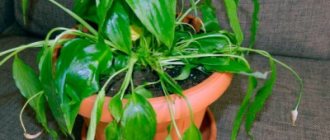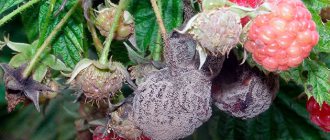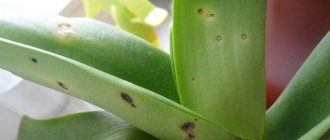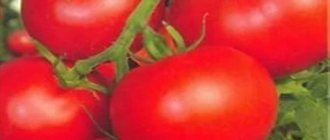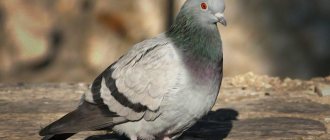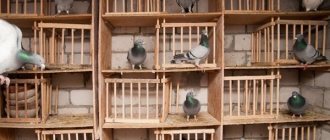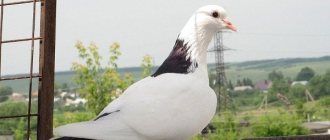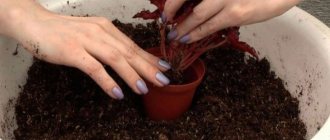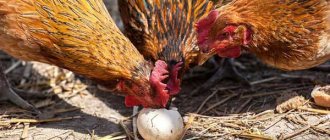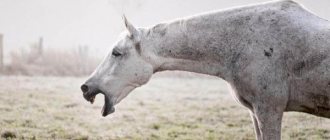Psittacosis
The viral infection affects wild, domestic, and farm birds, and can attack the human body. The disease occurs in an acute form, accompanied by severe symptoms, and in a chronic form.
Symptoms of psittacosis in pigeons:
- exposure of skin around the eyes;
- narrowing of the eyes, making them oval in shape;
- fear of bright light;
- change in iris color;
- lacrimation;
- sticking of eyelids;
- heavy, wheezing breathing;
- weight loss;
- nasal discharge;
- diarrhea;
- lack of appetite;
- paralysis of limbs and wings.
In the chronic form of the disease, the pet eats poorly, breathes heavily, and discharge flows from the nostrils. For treatment, antibiotics “Azithromycin”, “Erythromycin”, “Tetracycline” are used and mixed into the feed. The areas of the head around the eyes and nostrils are washed with water and treated with tetracycline ointment. “Miramistin” is instilled – a drop into each nostril. To restore intestinal microflora damaged by antibiotics, a complex of vitamins is given. Treatment lasts 10 days.
In the absence of timely treatment, the pet dies due to impaired breathing and exhaustion. In advanced situations, sick birds are destroyed so that the infection does not spread to healthy individuals.
Expert opinion
Zarechny Maxim Valerievich
Agronomist with 12 years of experience. Our best country expert.
Ask a Question
Prevention consists of disinfecting the dovecote. For processing, use formalin solution or soda slaked with boiling water. All surfaces of the poultry house are covered with bleach in 2 layers. The trash is burned, the droppings are disposed of in a timely manner.
Smallpox
The viral infection attacks pigeons mainly in the spring. Symptoms of the disease in pigeons:
- shedding of feathers;
- covering exposed skin with red spots;
- the appearance of a yellow coating on the beak;
- damage to the mucous membranes of the oral cavity.
Sick birds should take broad-spectrum antiviral agents, for example, Albuvir. For preventive purposes, birds need to be vaccinated.
Treating pigeons
Every breeder should know what pigeon diseases exist (and their treatment). Medicines are prescribed depending on the course of the disease. When diagnosing coccidosis, mycoplasmosis or salmonellosis, antibacterial drugs are used. In particular, Tetracycline or Oxytetracycline is prescribed. Medicines are available in the form of tablets or powder. In addition, combined antibacterial drugs are used, for example, Etazol, Enrostin.
When smallpox, streptococcal infection or spirochetosis occurs, drugs such as Bicillin or Ecmonovocillin are used for therapy. Tylosin or Erythromycin will help with pneumonia and psittacosis.
Nystatin will help get rid of thrush, external parasites, and inflammatory processes of the skin. Preparations based on albendazole help well against worms. When using medications, be sure to read the instructions for them.
Twirly
Also called Newcastle disease. This is a common and deadly pathology that mainly affects wild pigeons. The virus invades the central nervous system, causing the bird to begin having epileptic seizures.
The whirligig develops in stages:
- at the 1st stage, the bird walks unevenly, keeps its head bowed, body temperature is a couple of degrees higher than normal;
- at the 2nd stage, the pet randomly turns its head, falls over on its back, does not eat, and dies from exhaustion.
Treatment is not always effective; you can try Lozeval together with immunostimulants.
What diseases do pigeons carry (which ones are dangerous to humans)
Pigeons not only become infected with diseases, but they themselves are carriers of infections, some of which are dangerous to humans. A person can become infected by inhaling dust particles from poultry droppings containing the pathogen; sometimes the infection is transmitted through dirty hands or clothing. Pigeon breeders and people who like to feed wild pigeons are especially at risk.
What diseases can a person contract from a pigeon and how do they manifest themselves:
- Salmonellosis . Causes acute intestinal inflammation.
- Psittacosis . Characterized by a feverish state, intoxication of the body, damage to the lungs and central nervous system
- Newcastle disease. Accompanied by flu-like symptoms and eye damage.
- Tularemia . A bacterial infection threatens a person with a rash, lymphadenitis, prolonged fever, intoxication, and enlarged liver. Causes conjunctivitis, inflammation of the pharynx, lungs
Those most susceptible to diseases are pigeon breeders and pet store workers who are in constant contact with birds. In urban environments, young children, elderly people, and people with immunodeficiency are at risk. You should not feed pigeons living in parks and squares or handle them.
Salmonellosis
The disease is also called paratyphoid. Salmonella bacteria are spread through food, drink, and droppings. Symptoms are determined by the form of the disease and the condition of the bird:
- the acute form is manifested by ruffled plumage, lethargy and depression, reluctance to take food and water, loss of the ability to take off;
- the intestinal form is manifested by bloody diarrhea;
- the articular form is accompanied by trembling and cramps of the limbs.
Salmonellosis in pigeons is treated with the drugs "Levomycetin", "Tetracycline", "Baytril", the dosage is determined by the veterinarian. The course lasts 2 weeks. In addition to antibiotic treatment, it is necessary to disinfect the dovecote. Prevention consists of disinfecting the poultry house 2 times a year, regular cleaning and ventilation, and vaccinating pets.
The bacterium is tenacious both in the body and in the external environment. Many birds die even with timely treatment.
Salmonella is dangerous for the human body; it invades the heart muscle, blood vessels, and digestive organs. After about a day, an infected person develops tachycardia, fever, profuse diarrhea, and vomiting. A person with a strong immune system usually ends up with dehydration. A child, an elderly person, or a person with immunodeficiency may need hospitalization.
Tuberculosis
Pigeon tuberculosis manifests itself in the form of lesions in various tissues and organs of the bird. You can see obvious signs of the disease in pigeons in the photo. Their treatment is carried out in accordance with the existing symptoms. Depending on the route of infection, the bacteria penetrate the mucous membrane of the affected organ and eventually spread to all nearby organs and systems of the bird.
Signs of the disease can be very different, it all depends on the infection of certain organs. Among the main signs are the following:
- inactivity;
- weight loss;
- lameness;
- swelling on the sole of the feet;
- diarrhea.
Infected pigeons are considered the source of infection. Bird secretions and direct contact with them are also dangerous. For treatment, drugs such as Ampicillin and Oxytetracycline are used. If the signs of tuberculosis are too pronounced, the pigeon must be killed and the poultry house disinfected.
Worms
Many birds suffer from helminthiasis, but the disease is more dangerous than it seems. Parasites affect birds with weak immunity, poor nutrition, and living in unsanitary conditions. Sick pets lose tone, become lethargic, and hardly move. Their feathers become dull, their limbs, in most cases, become paralyzed, and bleeding may occur. In advanced cases, due to intoxication of the body, the birds die.
See also
Causes and symptoms of pigeon pox, treatment and preventionRead
Pigeons are treated with drugs based on albendazole. The dose is a single dose, the dose is set by the veterinarian, it must be strictly observed, since anthelmintic drugs have a high degree of toxicity. After treatment, pets are given vitamin supplements.
Paramyxovirus
It poses no danger to people. Paramyxovirus is transmitted by airborne droplets and through direct contact with a sick individual. Carriers can be people, rodents and insects.
Symptoms:
- the bird is constantly thirsty;
- weakness;
- frequent diarrhea;
- unnatural rotation of the neck and whole body;
- timidity;
- seizures;
- paralysis;
- at the last stage of the disease, the pigeon falls, does not move, does not eat or drink, and dies quickly.
Consequences of paramyxovirus - death
There are no special drugs for the disease. The only way to combat paramyxovirus is to vaccinate all individuals. Medicines intended for this purpose: Lasot, Colombovac PMV.
Video - Paramyxovirus of pigeons. Prevention, treatment
Coccidiosis
Coccidia are simple microbes that spread through food and droppings, affecting the digestive tract in the bird's body, causing enteritis and inflammation in the intestines. Mostly young individuals are affected.
Symptoms depend on the form of the disease:
- in the subclinical form, the sick bird develops immunity, due to which the disease is asymptomatic;
- in the acute form, severe symptoms appear 5-7 days after infection.
Symptoms of acute coccidiosis in pigeons:
- unkempt state, ruffled plumage;
- lethargy;
- loss of body weight, reduction in head volume;
- bloody diarrhea;
- constant yawning;
- deterioration in coordination of movements on the ground and in flight;
- paralysis.
Pigeons should be treated with coccidiostats. The specific drug is chosen by the veterinarian, taking into account the physical condition of the pigeons and the severity of symptoms. Usually they prescribe Amprolium (added to food, course lasts 2 weeks), Baycox (added to food, treatment lasts a week).
The dovecote in which sick birds are found must be cleaned. But cleaning should be dry, mechanical, using a broom and scraper, since the reproduction of coccidia becomes more intense in a humid environment.
How to treat pigeons
Most common diseases in pigeons can be successfully treated at home, so if you discover that your bird is unwell, there is no need to panic. The first step is to diagnose the disease and determine the cause that caused the disease, and then eliminate the unfavorable factor. After which you can begin treatment, which depends on the type of disease.
Breeders who keep pigeons use both medications and traditional medicine. It should not be forgotten that the sooner the course of medications is started, the higher the chance of saving your feathered friends.
Folk remedies
Treatment with folk remedies for pigeons is not as effective as taking medications, however, decoctions and infusions of medicinal herbs will help relieve discomfort, reduce inflammation and strengthen the birds' immunity.
The following recipes have worked well:
- Pumpkin seeds - help get rid of worms. To eliminate parasites, pigeons are given crushed raw pumpkin seeds for four days in a row.
- Garlic oil is added to food to remove parasites.
- Bee bread is an excellent immunostimulant and restores the strength of birds. Two tbsp. spoons of crushed beebread are mixed with 2 liters of water and given to pigeons as a drink.
- Pine infusion - contains vitamins and minerals to strengthen the immune system. The birds are given a decoction of pine needles, infused for 24 hours.
- Chamomile infusion - helps with diarrhea, bloating and inflammatory processes. To prepare, pour boiling water over 2 teaspoons of dry chamomile and leave for an hour.
Pumpkin seeds
Garlic oil
Perga
Pine infusion
Drug therapy
The use of pharmaceutical drugs for diseases of pigeons is most effective and efficient. To eliminate common ailments of poultry, veterinarians recommend using the following drugs:
- Trichomoniasis - Metronidazole, Trichopolum, Ornidazole are used for treatment. The dosage and duration of administration are determined by the veterinarian, based on the condition of the birds.
- Coccidiosis - coccidiostats are used to eliminate it: Amprolium, Baycox. The dosage and method of administration are selected according to the instructions for the drugs. Before taking medication, sick pigeons are separated from the flock, and a veterinarian examination is required.
- Candidiasis - antibiotics "Terramycin" and "Biomycin" will help get rid of the disease. Additionally, vitamin and mineral complexes are included in the course of treatment.
- Psittacosis - at an advanced stage, birds are destroyed to save the population. For treatment, Erythromycin, Eriprim, and Tetracycline are used. 2 drops of Miramistin are instilled into the nose.
- Salmonellosis - the type of medication depends on the form of the disease. Most often, Tetracycline, Ampicillin, and Baytril are used to eliminate the infection. The exact name of the appropriate product and dosage must be prescribed by a veterinarian.
- Newcastle disease - complex treatment is determined by a veterinarian based on analysis of the droppings. Usually, Fosprenil is used to eliminate whirling, combining the medicine with Gamavit and Sporovit.
Trichomoniasis
Trichomonas multiply in dirty feed and stagnant water and enter the bird's body orally. In birds, it invades the digestive tract and liver. The infection can be transmitted to humans and affect the organs of the genitourinary system.
Symptoms of the disease in pigeons:
- lethargy, muscle weakness;
- loss of ability to fly;
- feathers stuck together;
- yellowish plaque in the oral cavity with damage to the upper respiratory tract;
- bloated belly;
- diarrhea, feces with a putrid odor;
- brown nodes on the body with the skin form of the disease.
If human trichomoniasis can be treated with folk remedies and herbs, then avian infection can be eliminated only with medications. To treat pigeons, the drugs “Tricho Cure”, “Ornidazole”, “Metronidazole” are used.
A sick pet is unable to feed on its own. The owner has to force the food down the throat.
Plaque in the oral cavity is carefully removed with a thin blade, the exposed surface is lubricated with iodine or a mixture of iodine and glycerin. The drug "Trichopol" in liquid form is used to blot the affected body and feathers, and also drop it into the mouth; for young birds, take 17.5 g per 1 liter of water. To lubricate the affected areas, you can also use 0.25% silver nitrate, Lugol's solution.
Trichomonas are unstable in the external environment; regular cleaning and disinfection of the poultry house is sufficient to prevent infection. Also, for preventive purposes, it is recommended to periodically add Trichopolum to the drinking bowl.
Descriptions and symptoms of common diseases in pigeons
Below is a brief description of the 10 most common diseases in pigeons, and the first signs and symptoms are described.
Newcastle disease, or "whirlwind"
Newcastle disease
The disease mainly affects growing individuals; adult birds with strong immunity show resistance to infection.
In pigeons, the disease is accompanied by symptoms of damage to the nervous system:
- apathetic state;
- the bird sits ruffled, reacts weakly to stimuli;
- paresis of wings, limbs, tail;
- convulsions are observed, often their occurrence is associated with the penetration of the sun's rays into the dovecote.
The pigeon may fall in flight and begin to thrash on the ground. At a later stage, paralysis occurs: the bird sits, leaning on its chest, the neck is unnaturally twisted, the beak is raised up.
Smallpox
A viral infection of birds, characterized by a chronic course , the development of conjunctivitis and the formation of foci of rash on the head. In the diphtheroid form, damage involves the mucous membrane of the respiratory tract.
Pox in pigeons
Young birds are sensitive to the disease; in chicks, the pathology usually damages the respiratory system; with reduced immunity, a mixed type of disease develops. In adults, lesions on the skin are more often observed, and a severe course is observed during periods of molting.
Smallpox is caused by a virus of the genus Avipoxvirus. The pathogen is excreted in feces, nasal mucus, and discharge from the eyes; in the skin form, discharged films and scales also contain an infectious agent. The eggs of a sick individual are also infected with the virus.
With any type of disease, the pigeon is depressed, the feathers are ruffled, the appetite is reduced or absent, the symptoms depend on the type of pathology:
- Skin form . It is characterized by the appearance of pale spots, which later turn red and transform into nodules. Gradually, they merge into warty growths, secreting a sticky exudate; when it dries, brownish crusts form. In an uncomplicated process, dry scabs disappear after a week or 10 days. After 3 weeks, a relapse of exacerbation cannot be ruled out.
- Diphtheroid form . It develops when the pathogen spreads to the mucous membrane of the nasopharynx, trachea and bronchi, and sometimes in the intestines. Light raised nodular elements are formed. They enlarge, unite, acquire a yellowish color, create a dense film or appear as cheesy inclusions of necrosis. The plaque does not allow the pigeon to fully feed and breathe, causing blockage of the larynx and suffocation.
Conjunctivitis is manifested by lacrimation and intolerance to light, mucous and purulent discharge with the formation of crusts that stick together the eyelids.
Secondary infection causes inflammation of the cornea, which can spread to all tissues of the eyeball, which causes loss of the eye.
Attention! The pigeon recovers with an uncomplicated course of the disease; poor housing conditions and an unbalanced diet weaken the bird, can cause secondary infection of the affected areas with pathogenic microflora and lead to the death of 3/4 of the flock.
Psittacosis
Ornithosis in pigeons
Ornithosis, or psittacosis, is a common infectious pathology of pigeons caused by the intracellular organism Clamydophila psittaci, which affects the intestines and parenchymal organs.
The pathogen lives in the bird’s body in a latent state, the trigger for the development of the disease is stress or a decrease in immunity caused by unfavorable living conditions. The infectious agent is transmitted through food or air.
Respiratory chlamydia spreads quickly and, if kept in a crowded environment, can infect the entire population of a dovecote.
An infected bird can be recognized by the following signs:
- the dove sits ruffled, with drooping wings and closed eyes;
- no appetite;
- mucus flows from the nasal passages;
- there is lacrimation and hoarse breathing;
- Liquid droppings are white, sometimes green.
Be sure to read:
How to distinguish a dove from a dove: methods of determining gender
The latent form develops when chlamydia penetrates the intestines; infection is manifested by decreased activity, decreased appetite, and periodic diarrhea.
Salmonellosis (paratyphoid)
Salmonellosis (paratyphoid) in pigeons
Paratyphoid, also known as salmonellosis, occurs when the Salmonella bacteria enters the body of pigeons ; infection occurs through the esophagus; cases of infection through the respiratory tract are less common. The bird dies due to poisoning, internal bleeding or sepsis.
The bacteria multiply in the intestines of the bird, as well as in the lungs, liver and kidneys, joints and brain. Chicks and young pigeons suffer the disease more severely; in them, the infection causes an acute course and causes 90% of the death of young animals.
In adults, the disease occurs in a subacute, sometimes latent form; its presence can be suspected by eggs with non-viable embryos.
Signs of salmonellosis:
- depressed state;
- elevated temperature;
- refusal of food;
- thirst;
- green liquid excrement, sometimes mixed with blood.
Due to weakness, pigeons move with difficulty, feathers bristle and fall out.
When joints are involved in the inflammatory process, an increase in the joint capsule is observed, the limbs lose mobility, and the muscles of the wings are tense.
Important! Damage to the nervous system develops with a long course of the disease, the bird walks staggering, can fly in circles, convulsions, paresis, and paralysis develop.
Trichomoniasis
Trichomoniasis in pigeons
A common infection of pigeons that affects wild and domestic birds, the causative agent is Trichomonas from the order of protozoa. The flagellar organism lives on the oral mucosa and crop, causing non-sterile immunity in adult birds.
In pigeons and weakened individuals, intensive reproduction becomes the cause of the inflammatory process.
Trichomoniasis most often affects the oral cavity, pharynx and esophagus of pigeons; infection can be detected by the following signs:
- the birds move little and are depressed;
- feathers are glued together, wings are lowered;
- sit with open beak;
- Dense yellowish elements are noticeable in the mouth.
Gradually, the formations increase in size, block the airways, and the pigeon dies from suffocation.
Penetration of the pathogen into the liver and digestive tract is accompanied by diarrhea with a putrid odor and an increase in the size of the abdomen.
Important! When a microorganism enters the chick's body through the umbilical scar, the skin at the site of inflammation thickens, a yellowish-brown nodule is formed, which goes deep into the body and damages the internal organs.
Coccidiosis
The pathology is caused by the simplest organisms – coccidia. Mostly young animals become ill when they ingest a significant amount of oocysts with contaminated feed and water.
Coccidiosis is characterized by damage to the digestive tract, destruction of the intestinal walls, manifested by:
- depressed state;
- loss of appetite and weight loss of poultry;
- frequent loose bowel movements;
- mucus and streaks of blood are noticeable in the stool, sometimes the droppings become brown in color;
The progression of the disease leads to movement disorders and paresis of the limbs.
Paramyxovirus infection
Develops as a result of infection by paramyxovirus serogroup-1. Infection occurs from sick birds that excrete the microorganism in their droppings, contaminating the environment through blood-sucking parasites; in crowded housing, airborne transmission is possible.
In 80%, the pathology causes death. Unlike chickens, paramyxovirus in pigeons does not damage the intestines, but affects the nervous system.
The disease progresses gradually:
- appetite decreases;
- thirst and diarrhea appear caused by changes in the functions of the excretory system;
- paresis of the limbs develops, leading to an unsteady gait, backing movements, and tipping over on the back;
Neck paralysis results in an inverted neck position.
Worms in pigeons
Worms
Like all types of birds, pigeons are also susceptible to helminths. Infection occurs when eggs are ingested with contaminated food, water, or by eating earthworms.
Birds can become infected with round, filamentous, tape parasites, the localization of which is observed in the crop, lungs, respiratory tract and oviduct.
Be sure to read:
How to catch a pigeon: 5 methods of catching, how to make a bird trap with your own hands
Worms primarily live in the intestines, causing bleeding and anemia, releasing waste products and poisoning the body.
A parasitic infection has no specific symptoms and manifests itself:
- deterioration of condition;
- loss of appetite;
- loss of feather shine;
- vomiting and diarrhea;
- heavy breathing;
- weight loss;
- pallor of the mucous membranes.
Young animals are most susceptible to the disease: pigeons grow slowly and feather changes occur later. The skeletal muscles undergo changes: if you pick up the bird, you can clearly feel the thin keel.
Important! Young birds become infected from their parents, so at the beginning of the breeding season, for preventive purposes, anthelmintic drugs are added to the birds' feed. The procedure must be carried out at least 3 times a year, especially in spring and autumn.
Tuberculosis
In pigeons, the disease is chronic; the infection is common not only to all species of birds; people and mammals are also affected. The causative agent is the Mycobacterium avium bacillus, which spreads in unsanitary conditions.
Tuberculosis in pigeons
With tuberculosis, nodules form on the internal organs of pigeons.
After infection, clinical signs appear after 2-3 months:
- the bird weakens and gets tired quickly;
- wings droop;
- feathers become dull and ruffled;
- the doves stop flying;
- sudden weight loss due to severe diarrhea.
In an advanced form, bone damage is recorded, the joints of the legs swell, anemia, paresis and paralysis develop. Death can occur due to rupture of blood vessels located in the internal organs.
Candidiasis (thrush, soor)
The disease is caused by the fungus Candida albicans, which affects the mucous membranes.
The pathogen belongs to the opportunistic microflora; it is activated by factors that reduce the body’s resistance:
- unbalanced diet;
- deficiency of vitamins A, B;
- use of antibacterial drugs;
- disturbances in the digestive tract, leading to the death of obligate intestinal flora, which prevents the proliferation of the fungus.
Mostly young individuals suffer; adult pigeons are found to be carriers of the infection.
Signs of thrush usually appear in weakened pigeons; then, due to the high virulence of the fungus, the infection quickly spreads among the young. At the initial stage, the disease manifests itself as decreased activity and loss of appetite.
Gradually the symptoms become brighter:
- diarrhea appears;
- white granular plaque is observed in the oral cavity;
- over time, the curdled accumulations acquire a yellowish tint;
- Thickening of the mucous membrane is noted, and the bird experiences pain when eating.
The pigeon has difficulty swallowing food, the crop is enlarged, and an unpleasant odor is felt from the beak.
Attention! If left untreated, candidiasis becomes chronic; the disease can last up to several months, with periodic relapses of the subacute form. As a result, the bird loses weight, is stunted, and sometimes dies.
Candidiasis
Also called thrush. The fungal infection mainly affects young animals with poor nutrition, lack of vitamins, and crowded housing. Adult birds with strong immunity rarely get sick, but can carry an opportunistic fungus.
In pigeons with an acute form of the disease:
- health worsens;
- loss of appetite;
- the goiter swells;
- digestive function is impaired;
- A cheesy mass accumulates in the oral cavity, making swallowing difficult.
In the chronic course of the disease, lasting from half a month to several months, the bird loses weight, suffers from diarrhea, and the oral cavity exudes a putrid stench.
Fungal infections in pigeons are treated with Biomycin, Terramycin, and Nystatin. To strengthen the immune system, a vitamin complex is given. All surfaces of the poultry house are treated with a mixture of formaldehyde and sodium hydroxide.
Aspergillosis
The fungal infection multiplies in damp bedding and feed. The risk of disease increases when birds are kept in dusty, damp, crowded conditions.
Symptoms of aspergillosis in pigeons:
- lethargic state;
- incomplete closing of the beak;
- accumulation of gray mass in the oral cavity;
- yawning and sneezing;
- blueness of limbs and beak;
- the desire to stretch the neck;
- frequent wheezing;
- the appearance of yellow crusts on the body in the skin form of the disease.
The disease is practically incurable; young animals die in 80-100% of cases. In adult birds, the disease often becomes chronic; they are treated with a spray made from 9 g of powdered iodine, 1 g of ammonium chloride, 0.5 g of aluminum powder, 5 ml of water.
Ticks and fleas
If antiparasitic measures are ignored, parasites even infect pigeons living at home. By feeding on bird blood, they cause anemia. At the initial stage of the spread of parasites, birds constantly clean their feathers and tumble in the sand. In advanced cases, when the plumage begins to fall out, it is too late to save the pigeons.
See also
Origin and description of rock pigeons, diet and status of a wild speciesRead
How to remove parasites depends on their type:
- scabies mites are removed with tar soap or birch tar, the product is lubricated on skin treated with Vaseline;
- The periodontal beetle is removed with Pyrethrum insecticidal powder, the affected areas of the body are powdered 3 times with a weekly interval;
- Pigeon bugs and fleas are destroyed by treating the pigeon coop with the acaricide “Trichlorometaphos”; you can also bake the surfaces with a blowtorch.
Vaccination
Pigeon vaccination
To prevent domestic pigeons from becoming infected with dangerous diseases, it is recommended to regularly vaccinate the livestock.
What medications exist for pigeons:
- Paramyxo Vaccin . _ _ Protects against paramyxovirus infection throughout the year, placed at the age of 40 days.
- Salmo PT . Vaccination against salmonella is carried out from 6 weeks, repeated administration - after 3 weeks.
- Virosalm . Complex vaccination against Newcastle disease and salmonellosis, contains inactivated microorganisms. The drug is administered at 3 weeks; it is indicated during an outbreak of the disease in a flock; revaccination is carried out after 14 days.
Be sure to read:
How to feed a pigeon chick at home: the right diet from the first days of life
If the pigeon is not vaccinated, the vaccine can be used before the competition to prevent infection of the prized bird.
Eye diseases
Eye diseases are usually associated with injury, infection and poor handling of pigeons. With conjunctivitis associated with poor nutrition, lack of vitamins, injury or contamination of the eye, the bird feels fine and has a good appetite. In this case, the affected eye is treated with a solution of boric acid. If the cause of eye suppuration is inflammation of the sinuses, salmonellosis or another infection, then it is necessary to eliminate the underlying disease.
Treatment and recommendations
If the bird is sick, it is important to start treatment in the early stages of the disease , otherwise the use of drugs may not be effective.
But it is difficult for a pigeon fancier to make a diagnosis based on the symptoms, since many symptoms are similar, so it is better to call a veterinarian.
If your bird is sick, it is important to start treatment in the early stages of the disease.
Attention! If sick pigeons are found, they are immediately isolated. It is necessary to carefully examine the livestock and remove suspicious individuals to prevent the spread of infection. It is necessary to thoroughly disinfect the dovecote with solutions of chlorine, formaldehyde or caustic soda.
What drugs are used:
- Newcastle disease and paramycovirus . In the early stages of the disease, cases of healing are known with the use of the immunomodulator Fosprenil, nootropic drugs, and vitamin complexes. In the advanced stage, the changes are irreversible; it is better to destroy the bird to eliminate the source of infection.
- Psittacosis. Antibacterial agents of the tetracycline series are used for adult birds; Azithromycin or Erythromycin is suitable for young birds.
- Salmonellosis. Antibacterial drugs are recommended: antibiotics from the penicillin group or nitrofurans (Furazolidone).
- Coccidiosis . Coccidiostats are prescribed - Coccidin, Statil, Baycox, sulfonamides and nitrofurans.
- Smallpox. The areas are treated with Lozeval or a solution of boric acid, the pus is removed, the area is cauterized with lapis, and a mixture of glycerin and Lugol is used for the nose. The complicated form requires the use of tetracycline or Enrofloxacin antibiotics.
- Trichomonosis. The overlays are carefully removed, the goiter is massaged, the areas are treated with Metranidazole and the medicine is instilled into the mouth.
- Candidiasis. Treatment methods for thrush include prophylaxis with vitamin B preparations, especially B12, B5, PP. Nystatin is used for fungus; it is allowed to use a combination of copper and iron sulfate at a dose of 1.8+1 g/kg of feed. To restore intestinal flora, an acidophilic culture in the broth is required.
- Worms. Antihelminthic drugs Piperazine, Prasifen, Levapharm are used.
Tuberculosis is not treated because the disease is dangerous, and birds are carriers of the infection,
Important! During antibacterial therapy, pigeons are additionally given special preparations containing large amounts of vitamins A, D and E.
Goiter
Pigeons' crops swell when they eat spoiled or vitamin-deficient food or drink rotten water. The goiter can become inflamed if glass, a pebble, or another hard and sharp object accidentally swallowed by a bird gets into it.
In sick pigeons:
- the goiter fills with unpleasant-smelling gases released when pressure is applied;
- appetite decreases;
- the goiter softens and becomes hot;
- When palpating a goiter, pain often occurs;
- body tone decreases;
- head down;
- Greenish discharge flows from the beak, which dries and turns into a crust.
The diseased goiter is washed with any of the following solutions:
- potassium permanganate (1:3000);
- 3% boric acid;
- 5% baking soda.
The birds are not given food for 24 hours after treatment. Drinking is not limited.
Listeriosis
Bacterial disease in pigeons is asymptomatic. Symptoms are observed only in birds with weak immunity; their central nervous system is affected, which quickly leads to death. There is no treatment; sick pigeons are destroyed.
The disease is dangerous for humans, especially for children, the elderly, and people with immunodeficiency. In them it can provoke blood poisoning, meningitis, endocarditis. Listeriosis can be detected in birds and humans only through laboratory testing of biomaterial. For a confirmed illness, a person is treated with antibiotics, the dosage of which is determined by the doctor.
But in cities they are not welcome
In a number of European countries, feeding pigeons in cities is prohibited and punishable by municipalities. Because it increases the bird population.
They pollute balconies and playgrounds, often spreading dangerous diseases of pigeons - infectious for birds and zoonotic diseases (bird - human - domestic animal), including very serious ones - tuberculosis, psittacosis and salmonellosis. All three are extremely dangerous for people of any country. Dying birds should not be picked up to avoid infection.
There are frequent cases of death of single birds, but they are almost never investigated for the cause of death, the only exception being the mass death of pigeons. Janitors simply throw them into the same trash cans.
We recommend reading! Breeding pigeons: raising, keeping and caring for purebred pigeons (105 photos and videos)
People are afraid of a large mortality rate of birds, including pigeons, considering it the beginning of an earthly apocalypse, as happened in 2011. The cataclysm that then engulfed the Old and New Worlds remained unsolved. In addition, birds react faster than humans to sudden changes in the environment.
Toxoplasmosis
How pigeons become infected is not yet clear. A sick bird refuses food, moves staggeringly, and has paralyzed limbs. Approximately half of the infected pigeons survive but remain carriers of the infection.
The protozoal pathogen is unstable in the external environment; it is killed by solar ultraviolet radiation. To destroy the infection, disinfecting the dovecote is enough. Toxoplasmosis is dangerous for humans, especially for pregnant women. They are more likely to have a miscarriage.
How to protect yourself from infection
Given the fact that many diseases of pigeons are dangerous to humans, caution should be exercised when contacting birds. Of course, it is difficult to contract the disease from street pigeons, but it is still possible. The chances of infection increase if a person breeds these birds or works in a poultry farm. You can protect yourself from infection by following the following rules:
- Do not eat raw eggs without being sure that the product is safe.
- Do not have contact with pigeons on the street: do not pet them, do not give food from your hands. If this happens, you should wash your hands thoroughly with soap.
- When working with sick birds, you need to wear a protective suit, mask and gloves. It is forbidden to bring an infected pigeon to your face, or to be near bird droppings, food or drink without a mask.
The health and life expectancy of domestic pigeons depends entirely on the efforts and responsibility of the owner. Timely vaccination of birds, careful care and cleanliness in the poultry house, and proper diet will help protect your birds from diseases and at the same time protect yourself from the risk of contracting a dangerous disease.
Newcastle disease
The previously described disease, also called whirligig, is dangerous not only for pigeons, but also for humans. Infection occurs as a result of contact with a sick bird. Incubation lasts 3-5 days.
Symptoms of the disease in humans are less pronounced than in birds:
- runny nose;
- heavy breathing with wheezing;
- temperature increase;
- itching in the eyes;
- depressed emotional state.
The infection is treated with Metronidazole. A sick person should drink a lot of warm water and eat well. If symptoms of the disease appear in a child, you should immediately call a doctor. Hospitalization may be required.
To prevent infection, it is necessary to vaccinate pigeons. The inactivated vaccine “Virosalm” is used for Newcastle disease. It is administered to 3-week-old chicks and revaccinated after 2 weeks. When caring for sick pets, the owner of the dovecote must wear personal protective equipment: a medical bandage, rubber gloves. It is strictly forbidden to handle infected pigeons with unprotected hands.
Types of diseases and methods of infection
All diseases of pigeons can be divided into two large groups:
- Infectious (contagious). They are caused by viruses and bacteria. These are the most dangerous diseases that are transmitted between birds, and sometimes even to humans.
- Non-infectious (non-contagious). These are internal and skin diseases, for example, arthritis, rickets, otitis media, conjunctivitis, etc.
Pigeons get sick more often than others, but adult birds are also susceptible to various ailments. Infectious diseases are transmitted in two ways:
- The direct way. Healthy individuals become ill after contact with infectious pigeons.
- Indirectly. Infection occurs after the infection enters the body through food, water, or soil.
